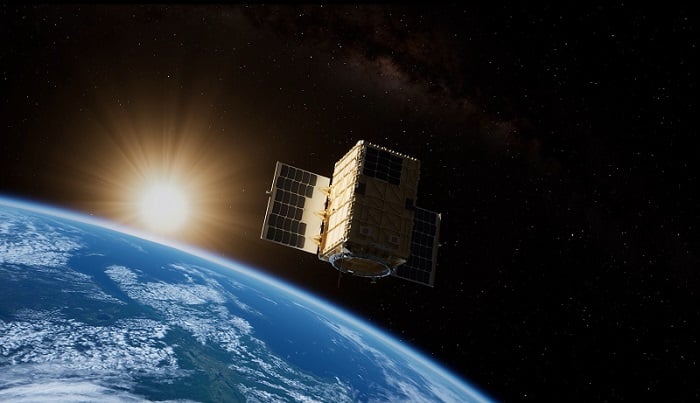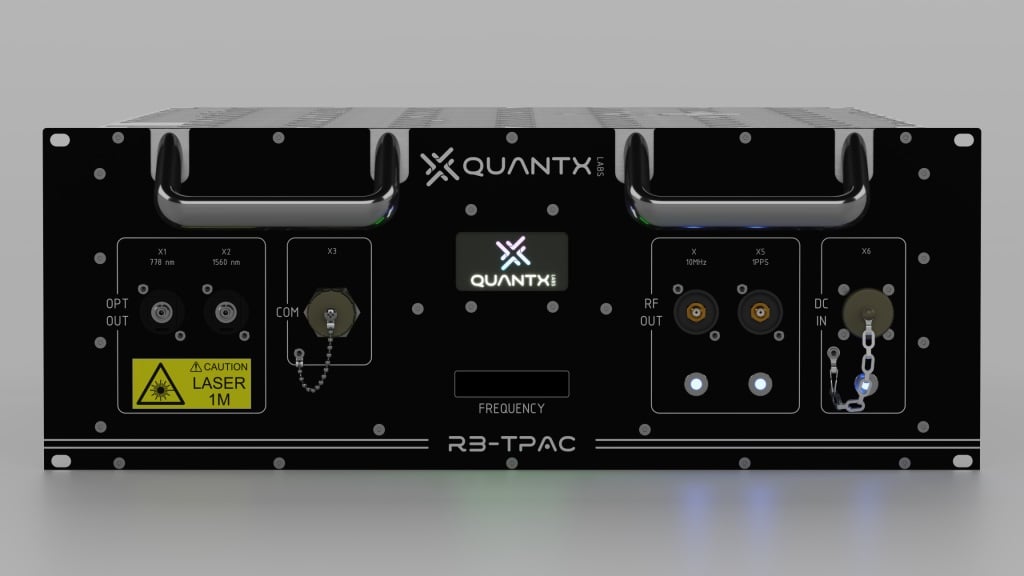
Boeing to Demonstrate Entanglement Swapping: Quantum Briefing: 09/13/24
EL SEGUNDO, Calif., Sept. 13, 2024 — Boeing has scheduled the 2026 launch of a satellite — dubbed Q4S — which is designed to demonstrate quantum entanglement swapping capabilities on orbit. The year-long Q4S demonstration involves two entangled-photon pair sources housed within a space vehicle. Boeing's payload and technology partner, HRL Laboratories, a joint venture between Boeing and GM, has made significant advancements in benchtop exercises as the joint team finalizes technical designs of a space-hardened payload that is ready for launch.

On-orbit render of the Q4S satellite which promises to unlock understanding of how quantum entanglement swapping behaves on orbit. Courtesy of Boeing.
CANBERRA, Australia — Quantum Brilliance, a developer of diamond-based quantum technology, announced a strategic collaboration with Oak Ridge National Laboratory (ORNL) to build a joint platform that enables collaborative development of quantum computing with high-performance computing (HPC) by exploring the on-premises integration of QB's quantum computing cluster into HPC systems at ORNL. The team plans to co-develop new computational methods that exploit parallel and hybrid computing and new software tools that will enable users to implement those methods and develop their own.
BOULDER, Colo. — Quantum sensing company Mesa Quantum closed an oversubscribed seed funding round of $3.7 million. The funding enables Mesa Quantum to build a new research and development facility, hire top technical talent, and position themselves to commercialize chip-scale quantum sensors for deployment at scale. The company’s technology has applications in defense, energy, space, telecommunications, and several other key economic areas.

Initial testing of QuantX’s first article optical clocks is showing almost an order of magnitude improvement on the performance of the current microwave atomic clocks used in today’s Global Navigation Satellite System. Courtesy of QuantX Labs.
ADELAIDE, Australia — QuantX Labs has made the first sales of its optical atomic clocks. The company recently signed two contracts with the Commonwealth of Australia's Department of Defense totaling over AUD 2.7 million ($1.8 million). QuantX will deliver a mobile precision timing test bed for Defense Systems to DSTG Edinburgh. The testbed, due for delivery in early 2025, can be used to test and evaluate sensors, communication, and navigation systems to determine operational resilience in a GPS-degraded scenario. QuantX will also deliver optical atomic clocks under AUKUS Pillar II by the end of 2024, enabling AUKUS — a trilateral security partnership between Australia, the U.K., and the U.S. — to develop advanced precision navigation and timing capabilities.
Published: September 2024